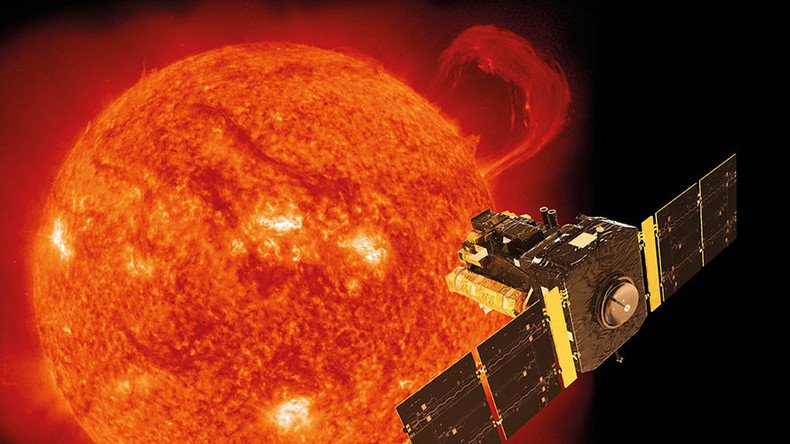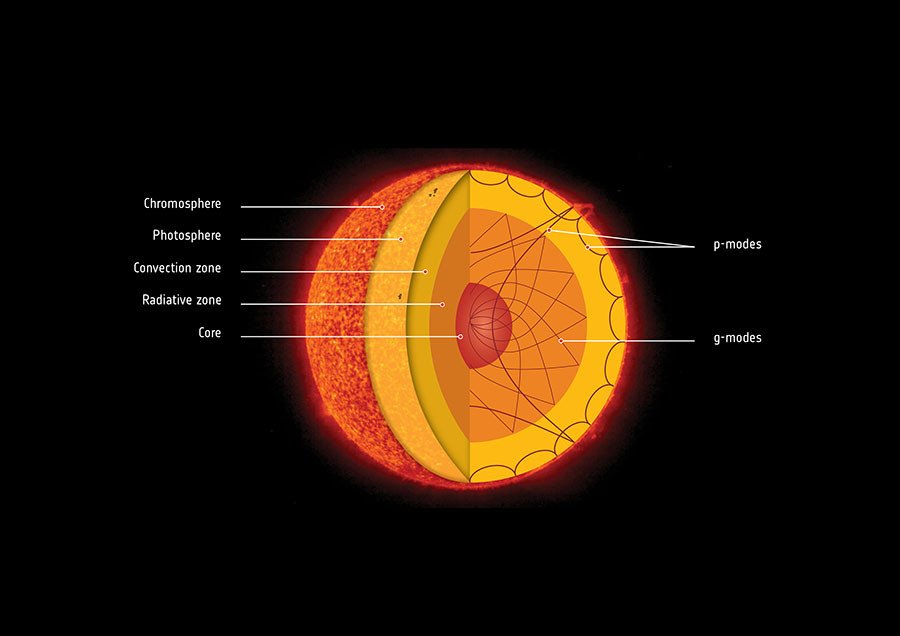Sun’s core rotating 4 times faster than surface

The sun’s core is rotating four times faster than its surface, according to new solar observations based on gravity waves inside our star.
Scientists using the ESA/NASA solar observatory, SOHO, detected gravity waves in the sun’s interior which revealed a rapidly rotating core.
The discovery took the team of international researchers by surprise as they had assumed the core was “rotating like a merry-go-round at about the same speed as the surface,” according to a statement from research partner UCLA.
READ MORE: Stargazers on standby: Solar flare set to strike Earth (VIDEOS)
The source of the unexpected internal spin could date back billions of years, according to the researchers.
“The most likely explanation is that this core rotation is left over from the period when the sun formed, some 4.6 billion years ago,” said Roger Ulrich, a UCLA professor emeritus of astronomy and co-author of the study, published in the journal Astronomy and Astrophysics.
“It’s a surprise, and exciting to think we might have uncovered a relic of what the sun was like when it first formed.”

The team used over 16 years of data collected by SOHO’s dedicated ‘Global Oscillations at Low Frequencies’ (GOLF) instrument to obtain a signature of imprinted ‘g-waves’ – lower frequency gravity waves which are especially difficult to detect.
The SOHO spacecraft was launched in 1995 to study the sun from its core to the outer corona and the solar wind.
"We've been searching for these elusive g-waves in our Sun for over 40 years, and although earlier attempts have hinted at detections, none were definitive," said Eric Fossat astronomer at Observatoire de la Côte d’Azur in Nice and lead author of the paper.
By measuring the acoustic waves, the researchers were able to determine the time it takes for the waves to travel from the sun’s surface to its center and back again.
They also noted that the sloshing motion of the gravity waves influenced the travel time.
READ MORE: NASA to reveal latest in hunt for 'another Earth' beyond our solar system
The results suggest the core is rotating once every week, nearly four times faster than the surface and intermediate layers, whose rotation varies from 25 days at the equator to 35 days at the poles.
The sun’s core and its surface also vary widely in terms of temperature. The former has a temperature of approximately 29 million degrees Fahrenheit or 15.7 million Kelvin while the surface is about 10,000 degrees Fahrenheit, or 5,800 Kelvin.












